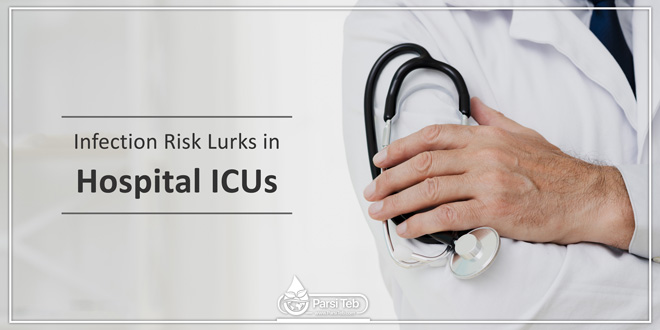Infection Risk Lurks in Hospital ICUs
Central Line-Associated Bloodstream Infection Kills Up to 25% of Patients Who Get It.
June 7, 2011 — Even health care systems with a sterling reputation aren’t immune to a potentially deadly type of hospital-acquired infection, Consumer Reports Health says in a new report.
An analysis of U.S. health care systems that have at least five hospitals indicates that many hospitals have high rates of central-line associated bloodstream infections in their intensive care units. Some hospitals don’t even reveal the infection rates, a new investigation indicates.
This type of infection, also known by the acronym CLABSI (central line-associated bloodstream infection), kills up to 25% of patients who get it. It is among the most deadly types of hospital-acquired infection, says Consumer Reports Health, which included more than 1,500 hospitals in its study.
The infection involves a central line catheter or tube that doctors place in a large vein to enable the rapid administration of fluids, blood, or medications to patients.
The hospital data included in the report came from one of 18 states that publicly report hospital infection rates or from The Leapfrog Group, a nonprofit organization focusing on improving health care in hospitals.
Many Teaching Hospitals Near Bottom of List
Consumer Reports Health reviewed information and ranked teaching hospitals that are members of the Council of Teaching Hospitals on central line-related infections for the second straight year.
It found that, compared to 2010, there had been no improvement in the number of these hospitals that reported zero infections.
“Most of us think of teaching hospitals as setting the standard for the right way to do things, so it’s surprising to see so many teaching hospitals near the bottom of the list,” John Santa, MD, MPH, and director of the Consumer Reports Health Ratings Center, says in a news release. “We are also concerned about the large number of hospitals that choose not to share their data.”
In the latest ratings, two hospitals, or only 1%, reported having zero bloodstream infections, compared to four hospitals, or 2%, last year.
Consumer Reports Health says three teaching hospitals received its lowest rating for preventing bloodstream infections – Saint Louis University Hospital in Missouri, Roswell Park Cancer Institute in Buffalo, N.Y., and Regional Medical Center in Memphis.
Eliminating Central Line Infections
Santa says that eliminating bloodstream infections should be the goal of every hospital, whether it’s an academic or teaching institution or a community facility.
“The process is simple, low-tech, and low cost, but it does require a commitment from the top down to affect a significant change in the hospital culture,” Santa says.
According to the analysis of all U.S. hospitals rated for central-line infection rates, only 142 or 12.7% reported having zero central-line bloodstream infections in patients. Those figures reflect a modest improvement from the first such study, when 105 hospitals, or 11% of them, reported having no patients with central line-related bloodstream infections.
“There’s a tendency to think of the large urban hospitals as being the best in terms of delivering patient care and safety, but the top performers include many community hospitals that tend to be on the smaller side,” Santa says.
Hospitals That Don’t Report Infection Rates
The only national source of voluntary hospital reporting is the Leapfrog Hospital Survey, which is run by the Leapfrog Group, an organization that works with large employers to encourage hospital transparency.
Leapfrog Chief Executive Officer Leah Binder says hospitals that decline to report should be identified.
“Consumers have every right to know how well hospitals are handling patient safety and whether it’s a priority for them to share that information publicly,” she says. “We worry about the hospitals that don’t report because we wonder, ‘What are they trying to hide.'”
“The big takeaway for consumers is that you can’t judge a hospital’s commitment to patient safety based on the flagship hospital,” Santa says.
He says an example of this is the Cleveland Clinic, one of the most famous hospitals in the nation. The Cleveland Clinic system of eight hospitals, including the flagship institution in downtown Cleveland, reported an overall rate 41% worse than the national average, Consumer Reports Health says.
“It’s worth noting, however, that many systems that did poorly also had standouts, including two of the Cleveland Clinic hospitals, Euclid Hospital and Huron Hospital, which both reported zero infections,” Santa says.
Kaiser Foundation Hospitals had an overall infection rate that was 36% lower than average. However, one of its hospitals, South San Francisco Medical Center, had a rate almost three times higher than the national average.
The nation’s largest hospital system, Hospital Corporation of America, had an infection rate close to the national average.
However, one of its hospitals, Lake City Medical Center in Florida, had a rate of infection 4.5 times higher than the national average.
Consumer Reports Health says the federal government needs to take steps to require information on bloodstream infections and that reform of the nation’s health care system could be a remedy.
 Parsi Teb Physical and Mental Health Journal
Parsi Teb Physical and Mental Health Journal 



